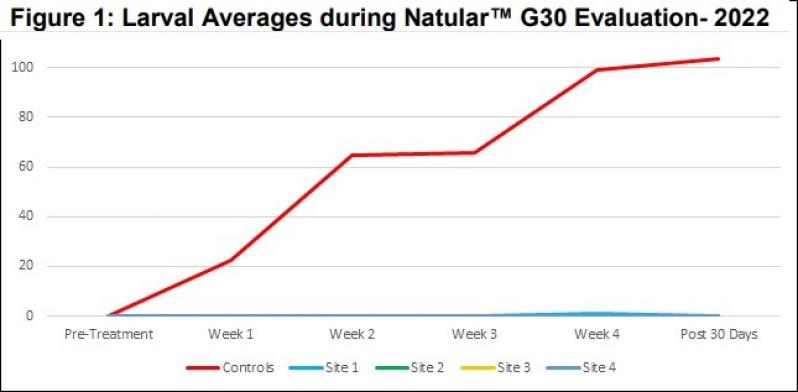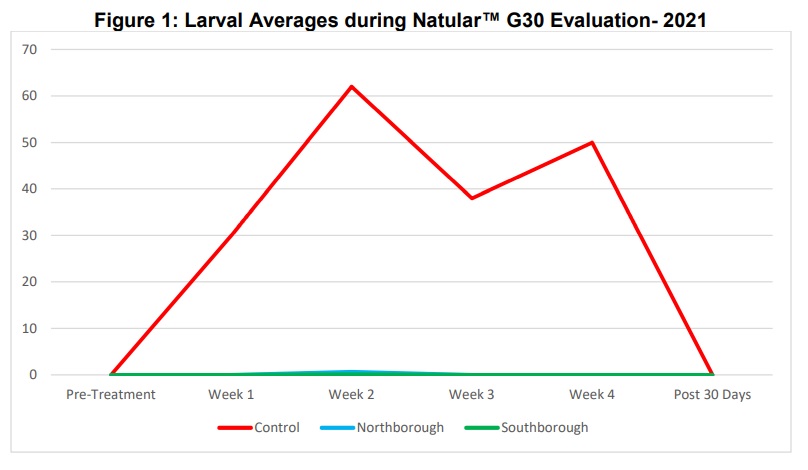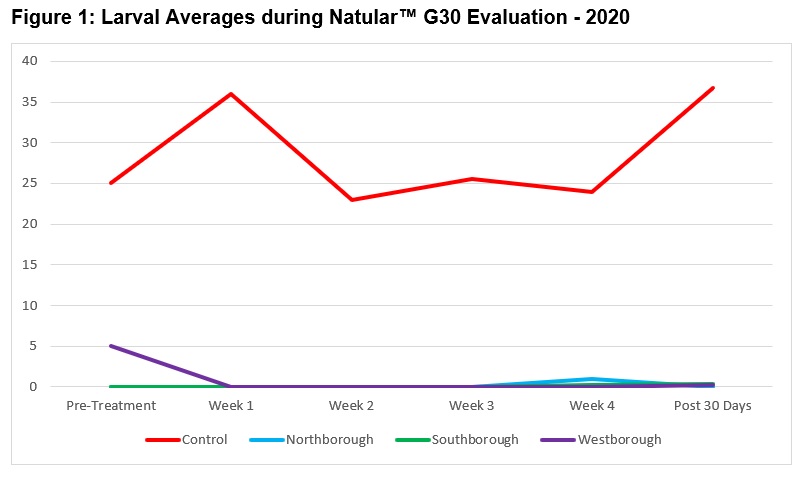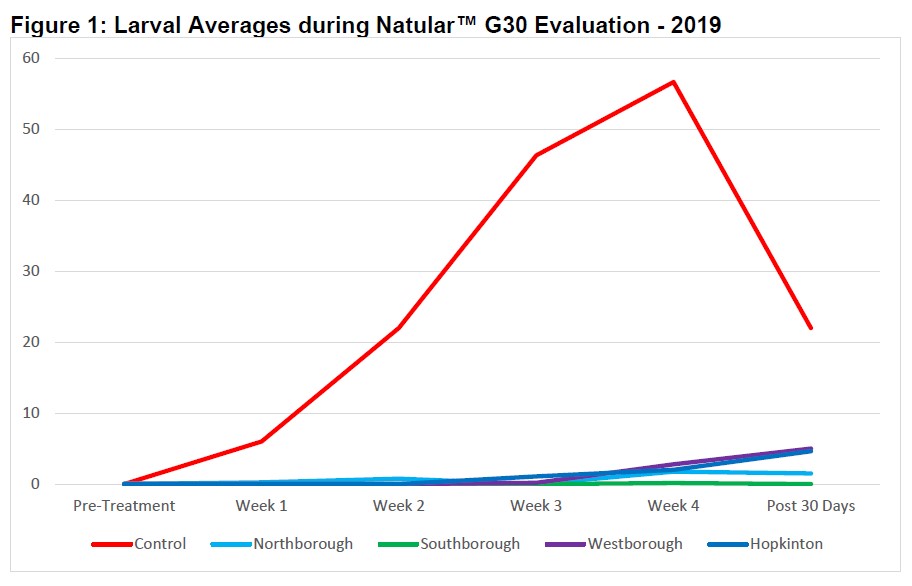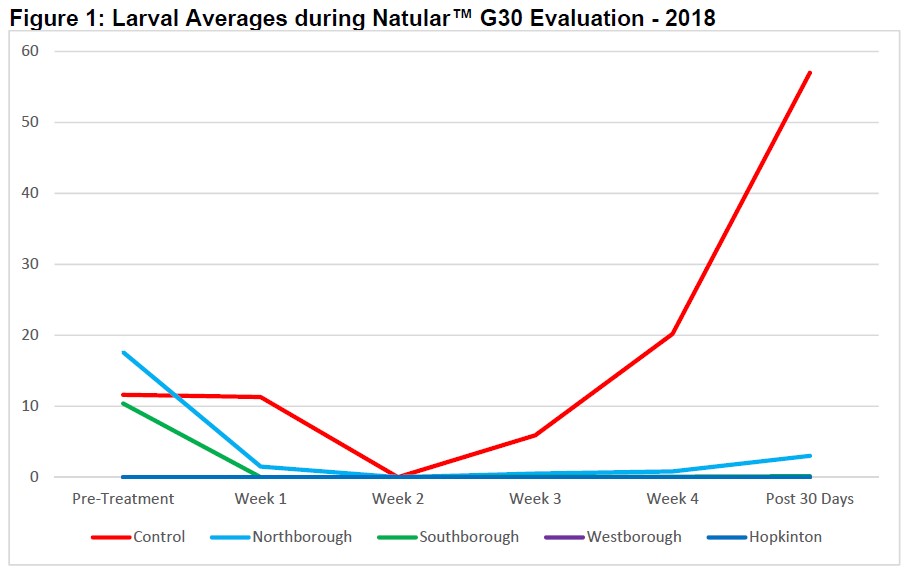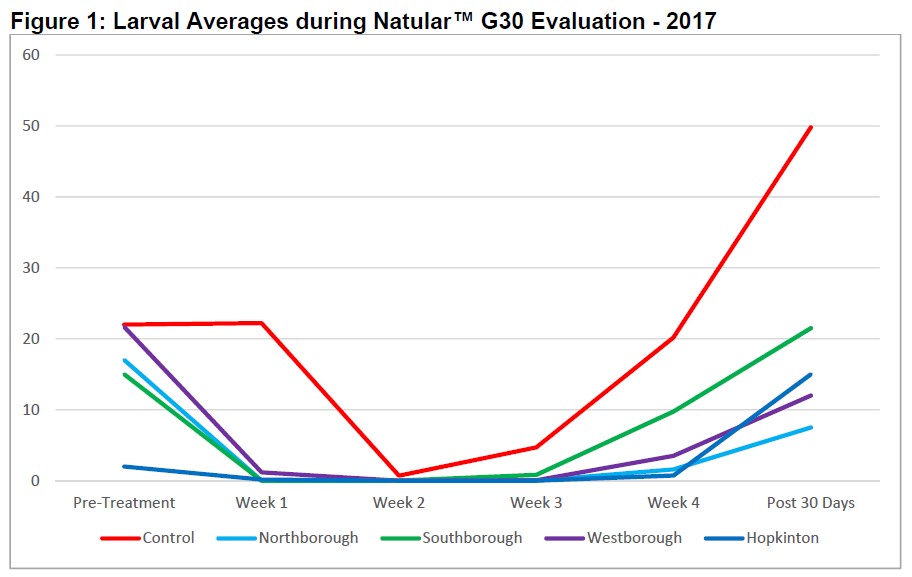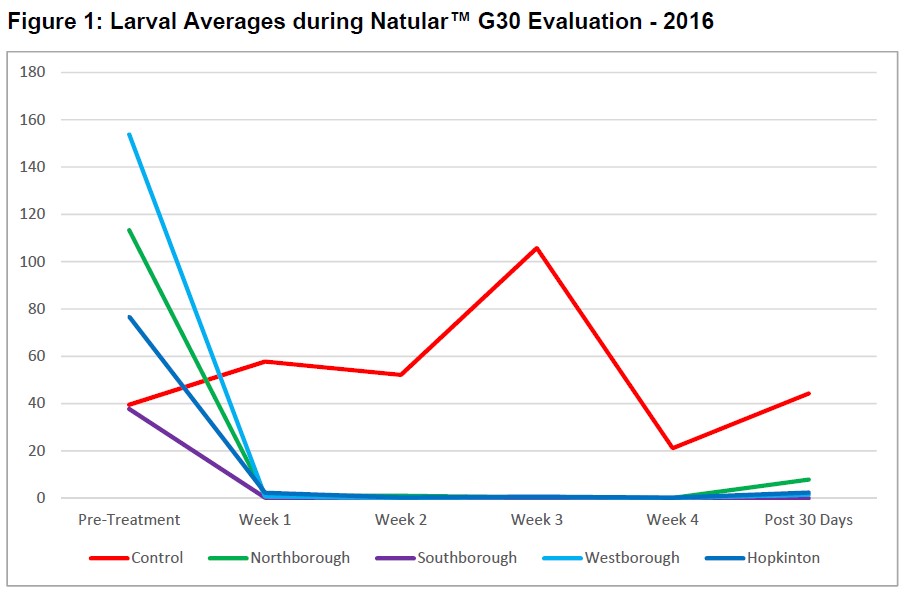Pre-hatch Larval Control Program
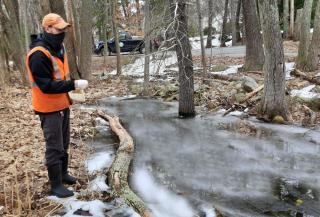
Larval control at CMMCP is typically done in wetlands after confirmation of sufficient larval presence (1+ per 5 dips). Pre-hatch control is performed using slow release products in areas of historical larval activity, before they hatch and become active. Low water temperatures and slow feeding patterns of early instar larvae are barriers to early-season treatments, but one bacterial product has shown success in this program.
Since 2014 CMMCP Biologists have investigated efficacy for pre-hatch control of mosquito larvae in area wetlands. In 2014 we applied slow release formulations of Bti and a combination Bti/Bs product in wetlands, with poor results (https://www.cmmcp.org/sites/g/files/vyhlif2966/f/uploads/2014_field_tria... and https://www.cmmcp.org/sites/g/files/vyhlif2966/f/uploads/2014_field_tria...).
Starting in 2015, we switched to an organically-certified, 30 day slow release formulation of the bacterial product Natular G30, active ingredient spinosad (https://www.cmmcp.org/pesticide-information/pages/spinosad-saccharopolys...). The next several years showed good efficacy, and in 2021 we are now operational with this product.
61 acres of wetlands were treated (157 locations) in our member communities in 2021. These wetlands have shown historical larval counts in early spring going back at least 2-3 years. The product will be applied on the ice, snow or open water, and efficacy checks will be made in some areas to determine control. Mosquito species targeted are Oc. excrucians, Oc. abserratus and Oc. canadensis. These species come out in great numbers in mid-May and are the most numerous species identified in trap counts in June and mostly responsible for spray application requests by area residents in early summer. Jamestown Canyon Virus (JCV) has been isolated from Oc. excrucians and Oc. abserratus, and Oc. canadensis is a known vector of the EEE virus.
With the success of this program, we are able to increase our larval control program, reducing mosquito emergence from these areas and reducing dependence on our adulticiding program.
2022 application summary
